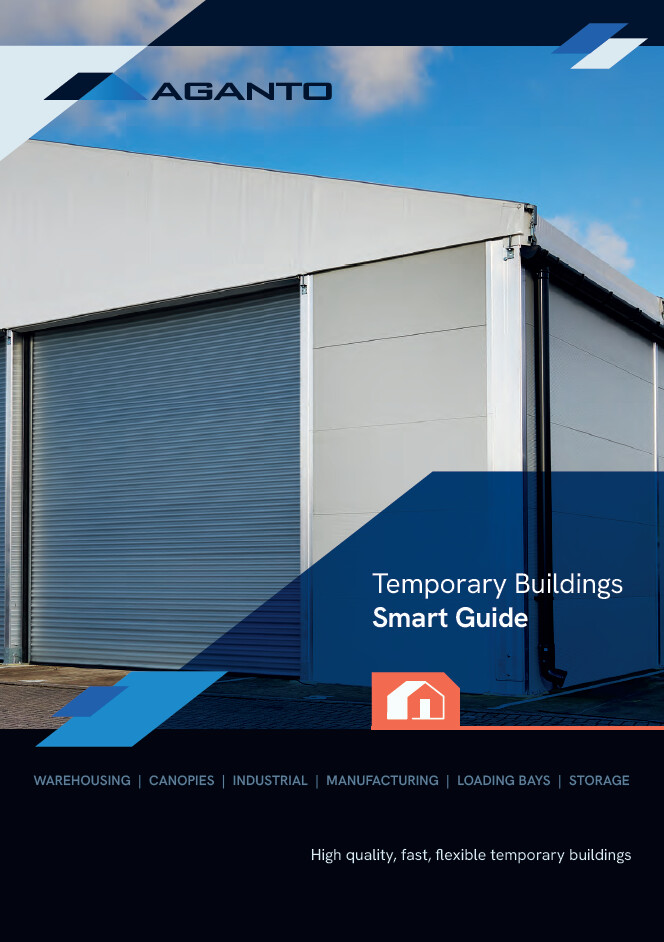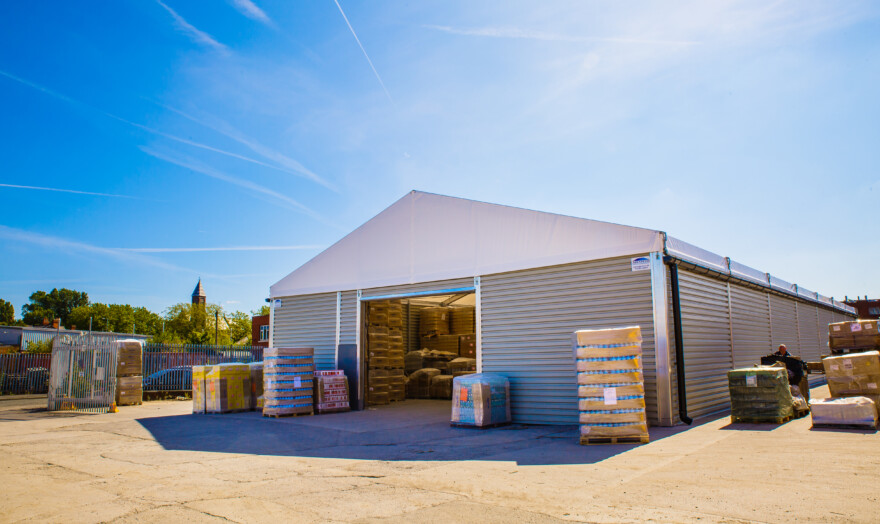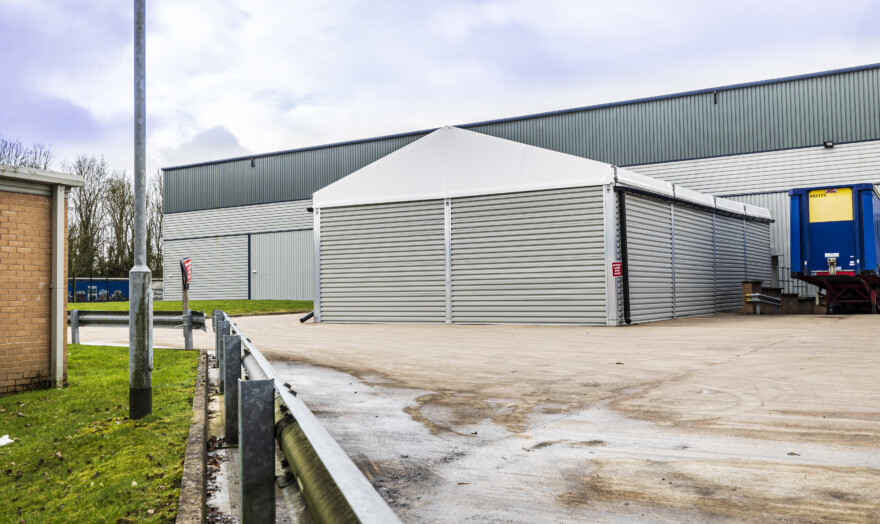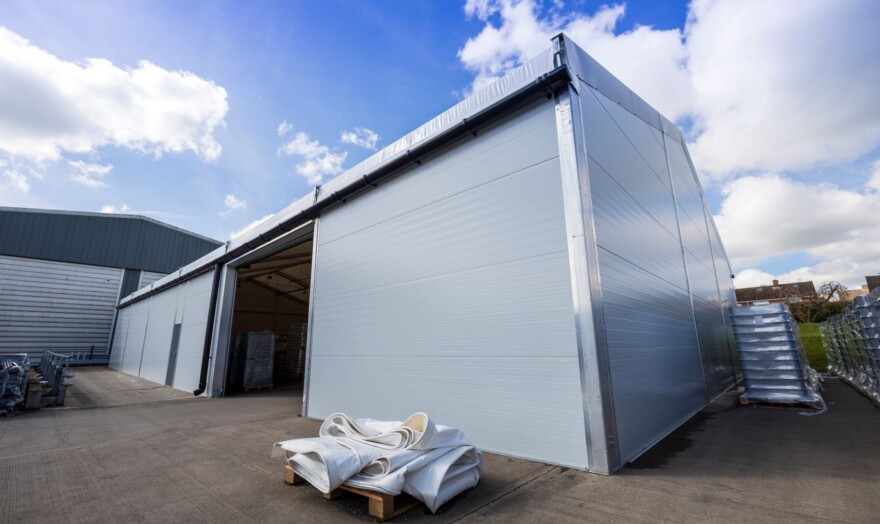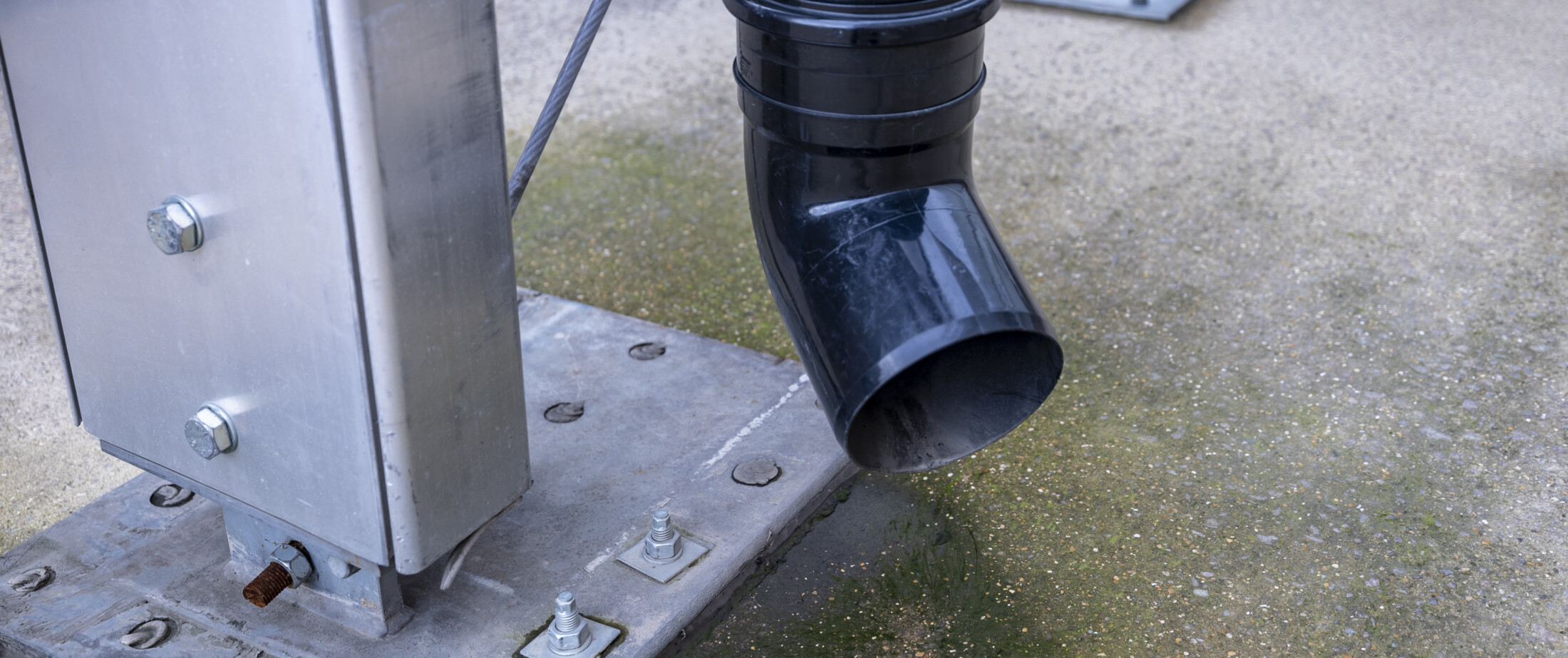
2 min read
What foundations are needed for a temporary building?
Do you need to undergo ground prep or put in foundations for temporary buildings? Or, can a temporary structure always be built directly onto the existing ground? For modular buildings the short answer to this is none. The longer answer is well, slightly longer.
First of all though, what type of temporary buildings are we talking about? If a building can be hired, easily removed and transported to different locations then it can be classed as a temporary building. Often modular buildings such as cabins used for offices and school classrooms fall into this category, along with event structures such as marquees and some industrial steel buildings used for storage space.
However, for the purpose of this article, we are looking at aluminium-framed industrial temporary buildings typically used for short or long-term storage, warehousing and other operational on-site activity. And, the clue to the question is in the title; aluminium.
Buildings engineered with an aluminium frame as opposed to a steel frame are much lighter. So, it stands to reason they will need far less load bearing than a steel building. Because of this, there is typically no need for foundations at all and they can be built directly onto existing hard standing by anchoring the frame straight into the ground. To ensure that the temporary buildings will remain in place uplift tests are carried out to make sure they can withstand the maximum uplift force.
Aganto buildings are all designed to withstand snow and wind loadings in compliance with the British Standards of Structural Safety (BSEN6399). This means they are incredibly durable even in harsh weather conditions and will remain sturdy for as long as you need them. Many of our clients have had an Aganto building on their site for over a decade.
So when would a temporary building need foundations?
One obvious answer is if the surface where a temporary structure will be placed is covered by grass then some kind of concrete slab would need to be laid. Other than that it’s generally down to what the building is being used for and the individual preference of a client.
Although temporary modular buildings can easily be installed on uneven ground, at certain times it can help to have the existing foundation levelled out before construction is started. If you intend on using your modular building for operating any heavy machinery or housing a workshop environment where staff are going to be working then you would definitely benefit from having a level floor. Alternatively, you might be buying a temporary building and want a level floor to accommodate long-term use.
Generally speaking, though this type of temporary building doesn’t need any foundations or serious ground prep. And, it’s this factor that gives them their crowning glory; speed. Unlike a traditional industrial building, you can generally have an aluminium temporary building delivered and installed within just 7-days without disrupting any of your business operations. So, if it’s a case of capitalising on a new order or unforeseen growth, you can do without the cost, hassle and delay of putting in a foundation. And, when you no longer need your building the area can easily go back to its original or new use straight away due to the temporary nature of the structures.
Want to know if a foundation is required on your site? Contact our team to discuss the hire or purchase of your temporary building and book an initial free, no-obligation technical site survey with one of Aganto's specialist installation managers.
Talk with our experts to kick-start your project or arrange a site inspection.
Fill out your project details, and we'll respond to your enquiry with a quote.
